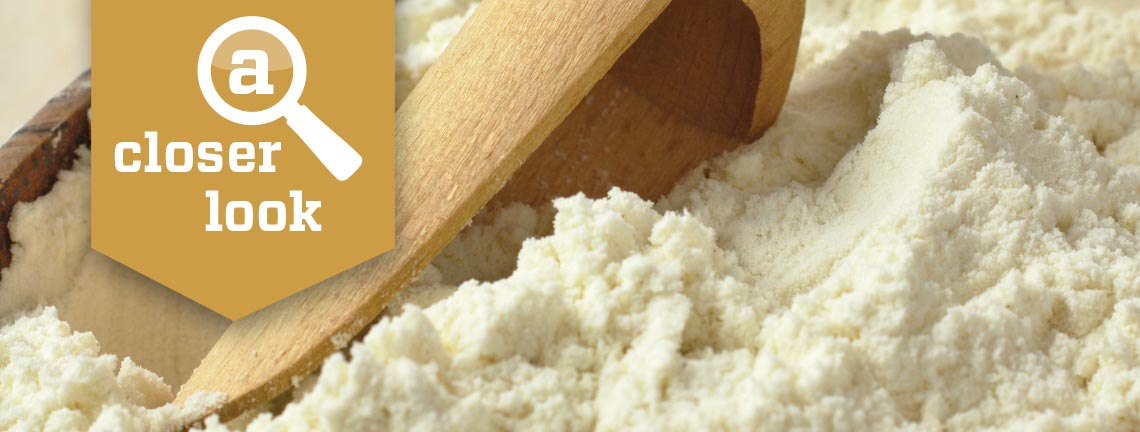Xanthan gum is a white to tan colored powder used in many food products. It is commonly used in condiments such as salad dressings and sauces, jams and fruit fillings to add viscosity and help stabilize the products by preventing ingredients, such as oils, from separating from the mixture. It is also used in ice cream to keep the texture smooth and prevent the formation of ice crystals. Xanthan gum can be used as a gluten replacement as it helps give gluten free dough a sticky consistency.
How is Xanthan gum made?
Xanthan gum is made from the fermentation of carbohydrates (sugars). The bacteria strain Xanthomonas campestris is fed with carbohydrate and metabolizes the sugars into a liquid solution. The solution is mixed with alcohol (ethanol or isopropanol) which causes the gum to separate from the water. The gum is then rinsed, dried and ground.
The carbohydrate used for the xanthan gum can be derived from cane sugar, lactose (dairy), corn or wheat. In the United States, xanthan gum is most often derived from corn because it is a cheap, subsidized crop. However, because corn is typically GMO, other types of carbohydrate are used in the USA to make non-GMO xanthan gum. In South America, cane sugar is often used due to the low sugar prices, while in Europe wheat sweeteners are commonly used.
Is Xanthan gum kosher?
Every fermentation process causes kosher concerns due to the ingredients that are used to make the fermentation more effective.
The alcohol is also a kosher concern. Ethanol can be derived from grapes (non-kosher), lactose (dairy), wheat and barley (chometz).
The OK recommends using only Xanthan gum with a reliable kosher certification.
Rabbi Hendel is a member of the OK Kosher Vaad HaKashrus.


 EN
EN  ZH
ZH  KR
KR  BR
BR  ES
ES  IN
IN  IL
IL 




